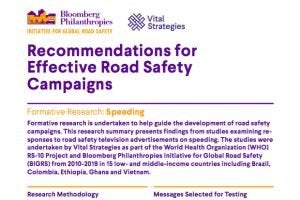
Overview
Speed and Crash Risk (ITF document) ⌵︎
This study aims to document objectively the relationship between vehicle speed and crash risks. It assesses to what extent recent changes in speed limits or the wide-scale introduction of automated speed enforcement have moderated actual average speeds, and whether this has delivered the safety impacts that theoretical models of the relationship between speed and crashes suggest. The cases analysed come from ten countries: Australia, Austria, Denmark, France, Hungary, Israel, Italy, Norway, Sweden and the United States. The report was prepared by the ITF’s permanent working group on road safety, the International Traffic Safety Data and Analysis Group (IRTAD).
What the study found ⌵︎
Speed has a direct influence on crash occurrence and severity. With higher driving speeds, the number of crashes and the crash severity increase disproportionally. With lower speeds the number of crashes and the crash severity decrease. This relationship has been captured in various models, most notably Nilsson’s “Power Model”. This shows that a 1% increase in average speed results in approximately a 2% increase in injury crash frequency, a 3% increase in severe crash frequency, and a 4% increase in fatal crash frequency. Thus, reducing speed by a few km/h can greatly reduce the risks of and severity of crashes. Lower driving speeds also benefit quality of life, especially in urban areas as the reduction of speed mitigates air pollution, greenhouse gas emissions, fuel consumption and noise.
All the cases indicated a strong relationship between speed and the number of crashes, i.e , an increase in mean speed was accompanied by an increase in the number of crashes and/or injured road users. Conversely, a decrease in mean speed was associated with a decrease in the number of crashes and injured road users. In no cases was an increase in mean speed accompanied by a decrease in the number of crashes or casualties. The pattern of the relationship is consistent across cases, although the size of the effect differs substantially between them. These differences are explained partially by varying definitions for injury crashes between countries and the small overall numbers of fatal crashes for some of the countries studied.
Did you know?
82% of Road Crash Fatalities and Injuries in the economically productive age groups (15 - 64 years.)
82% of Road Crash Fatalities and Injuries in the economically productive age groups (15 - 64 years.)


